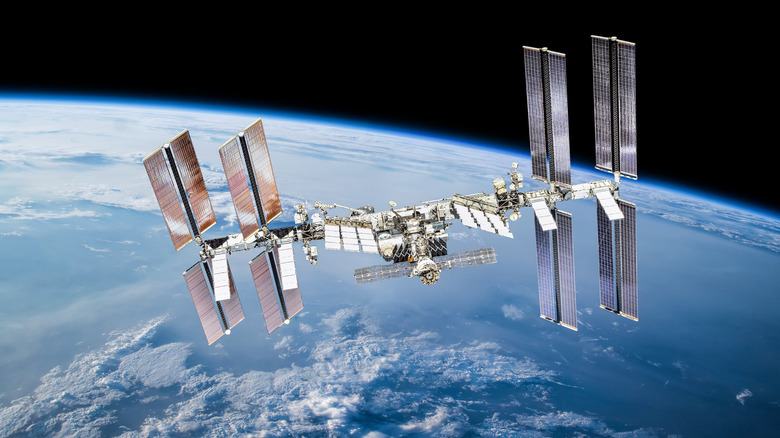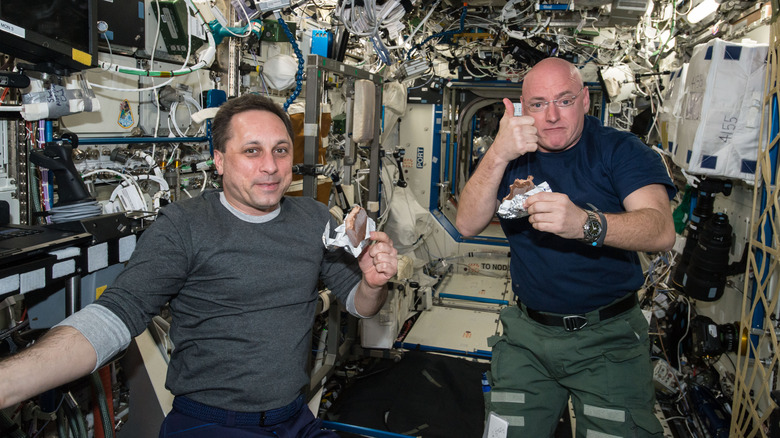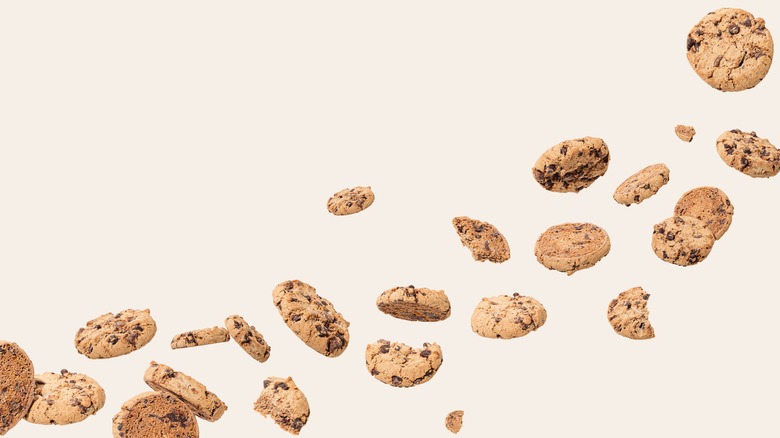The Clever Ways NASA Astronauts Cook And Bake In Space
NASA astronaut Don Thomas once said, "No one goes to space for the food ... but the views are amazing." And it's no wonder when you consider that the first food consumed in space was beef and liver paste from a tube, which Russian cosmonaut Yuri Gagarin ate aboard the Vostok 1 in 1961. John Glenn, the first NASA astronaut to eat in space, also squeezed his food from a tube — in his case, it was applesauce.
Since then, space food has come a long way. Astronauts today can enjoy fresh fruits and vegetables and foods in their natural form (such as nuts, beef jerky, and chocolate bars), in addition to rehydratable foods, irradiated foods, and thermostabilized foods. In fact, astronauts now have access to around 200 different food items in space. Most of the cooking in space is actually just rehydrating and reheating freeze-dried and thermostabilized food and beverage items, since the lack of gravity creates many challenges that astronauts face when preparing and eating food in space. However, astronaut ingenuity has led to examples of clever cooking in space, such as cooking raw onions using just a food warmer. Plus recent advancements in technology mean that even cookies can now be baked in space.
Clever and creative cooking hacks in space
Sandra Magnus, NASA astronaut and flight engineer for Expedition 18 to the International Space Station (ISS), experimented quite a bit with cooking aboard the ISS. One of her most impressive feats was to use the ISS food warmer, duct tape, and a lot of time and patience, to cook garlic and onions. The duct tape was placed on the table sticky side up to prevent the cut pieces of onion and garlic from flying away in near-zero gravity. She would then place the chopped onions and garlic, along with some olive oil, in foil saved from previous meals, and put it in the food warmer to cook. As the name implies, the food warmer is typically used to warm up prepared food items, rather than for cooking, and only works for 30 minutes at a time. By turning the food warmer on four or five times in a row, Magnus was able to sufficiently cook the onions and garlic.
According to NASA astronaut Christina Koch, astronauts can get real inventive aboard the ISS. She would add coconut oil to her coffee by using a syringe to inject the oil into her coffee drink bag, while other astronauts would come up with unusual food combos, such as a cracker together with some rehydrated shrimp cocktail — apparently one of the more popular food items in space — and sauce.
Baking in the final frontier
In late 2019, astronauts were able to successfully bake the first ever chocolate chip cookies in space on board the ISS. Using cookie dough supplied by DoubleTree by Hilton Hotels and the first space oven created by Zero G Kitchens, astronauts baked five chocolate chip cookies, using a range of different temperatures and times. Although the same cookies on Earth typically take around 16 to 18 minutes at 300 degrees Fahrenheit in a conventional oven, the cookies in space took quite a bit longer. Out of the five, the astronauts determined that the cookie baked at 300 degrees Fahrenheit for 120 minutes and cooled for 25 minutes and the cookie baked at 325 degrees Fahrenheit for 130 minutes and cooled for 10 minutes to be the most successful of the batch.
Further improvements in technology will also change what astronauts will be able to cook and bake in space in the future. Ascent Technology recently won NASA's Deep Space Food Challenge with a zero-gravity centrifugal oven. The oven, which has been tested on a parabolic flight so far and expected to be ready for production by 2025, can bake, broil, and freeze, which means that astronauts may be able to make dishes such as omelets, baked potatoes, boiled rice, pizza, and even fresh ice cream, in space in the not-too-distant future.


